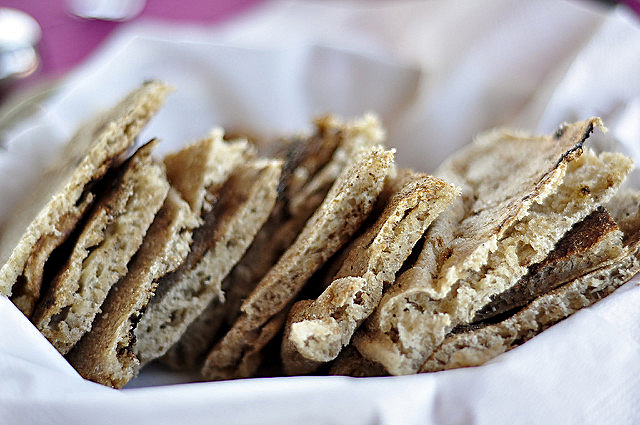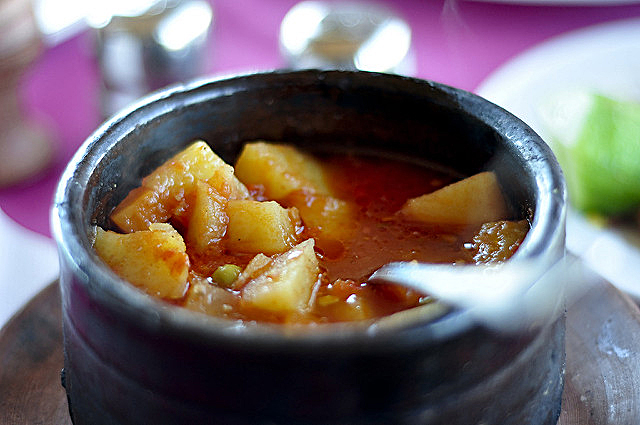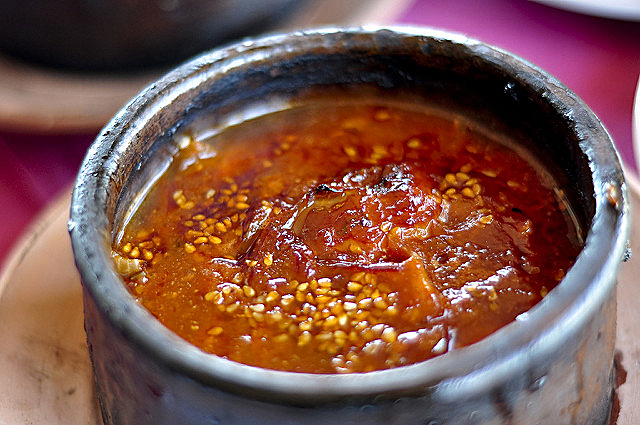Traditional foods and styles of cooking in the Upper Nile Valley are essential aspects of Nubian cuisine and culture, according to a recent news report.

Writing in The Arab Weekly, Mohamed Abu Shanab asserts that the Nubians expertly blend local food sources into their meals. The verdant fringe of agricultural land along the Nile has traditionally fostered the growth of wheat, sorghum, and barley, so Nubian cooks became adept at baking “a refined and extremely delicious bread,” Shanab writes. It is called kabed.
The baker mixes corn flour, sometimes adding yeast, with water, spreads the dough onto a mud hearth, and bakes it until the edges become crisp. The resulting bread is eaten for desert with honey and milk, or as part of a main course.
Moheieddin Saleh, an authority on Nubian traditional culture, told the author that most Nubians preferred to eat what they have been able to grow on their farms along the Nile. “They have managed to develop their own distinct cuisine from the things available in the local environment,” he said. But of course few live in riverside village any longer. Their tasty dishes are only prepared in a few Nubian homes.

Most Nubians no longer cook and eat their traditional dishes. Hamad Gabir, another expert on Nubian culture, said that most of the people have adapted to eating the foods of the Egyptian people that surround them and they no longer prepare their former dishes. He said that, sadly, this practice is destroying the culinary traditions of the Nubian people.
In the few existing original Nubian villages, however, people do try and preserve their traditions. They eat peas, spinach, okra, carrots, beans, and courgettes (also called zucchinis) prepared with their own blends of herbs and spices, grown locally. They thus eat dishes that are completely different from mainstream Egyptian cooking.
The author singles out a particular Nubian delicacy: raw camel’s liver. It is chopped into little pieces, added to bits of onions marinated in vinegar, blended with cumin, coriander, and chili sauce, and eaten raw. He adds that the dish is consumed widely by the Nubians, who believe it has many beneficial and nutritious effects.

Nubians also enjoy traditional dishes of fish, meat, chicken and vegetables, Shanab writes. Many of their kitchens have their original mud hearths, on which they use dishes, bowls, and trays made of clay or glass. Of course, they also have clay water coolers.
Mr. Saleh points out that while the Nubians are dispersed in Egypt, Northern Sudan, Kenya, and Uganda, their culinary tradition is a common factor with all of them. And, he argues, it is essential “to protect this culinary culture from dying.”
Archaeologists have found evidence from 5,000 years ago indicating the importance of foods in Nubian society throughout the ages, though of course ingredients and cooking styles have been adopted from outside cultures to add to the culinary riches.